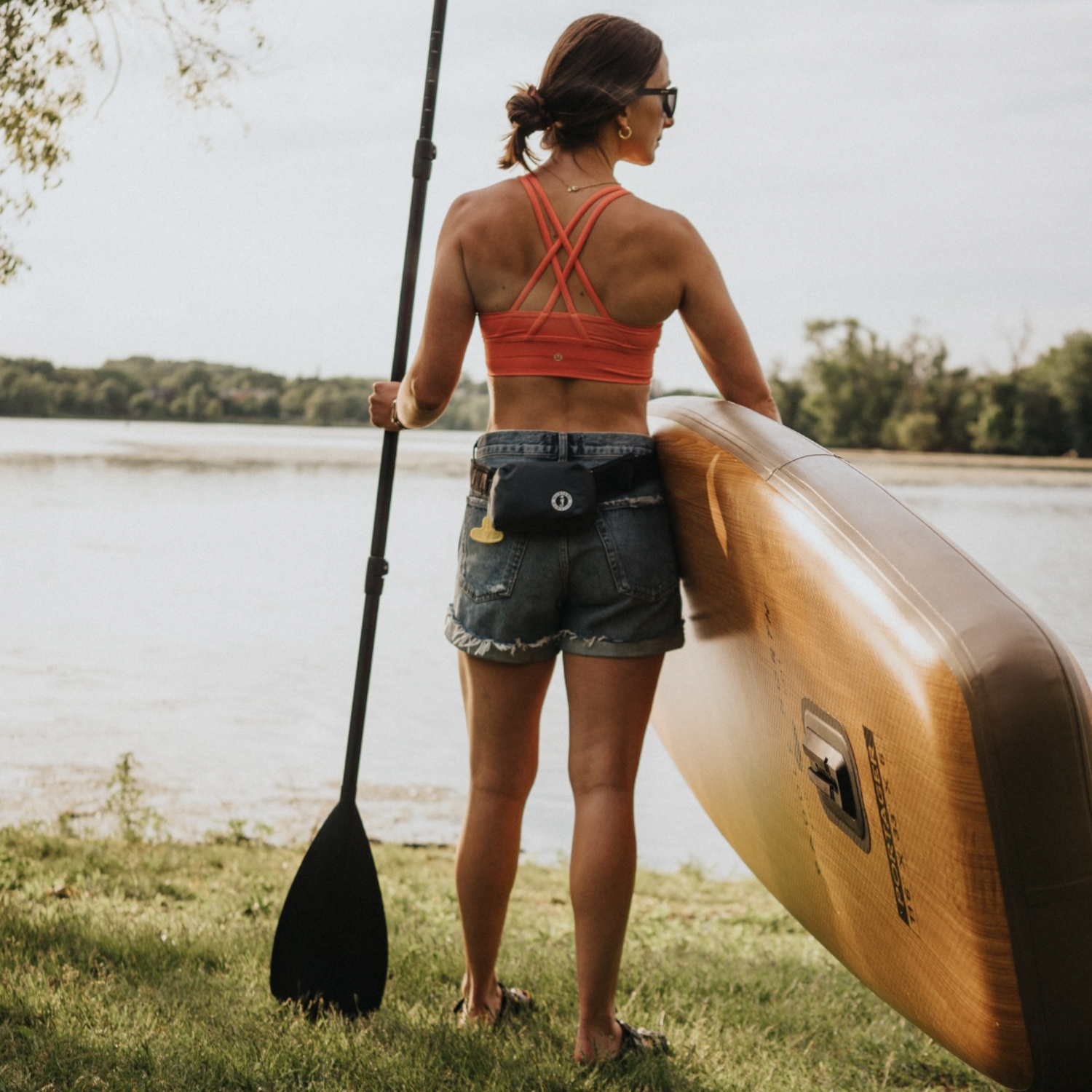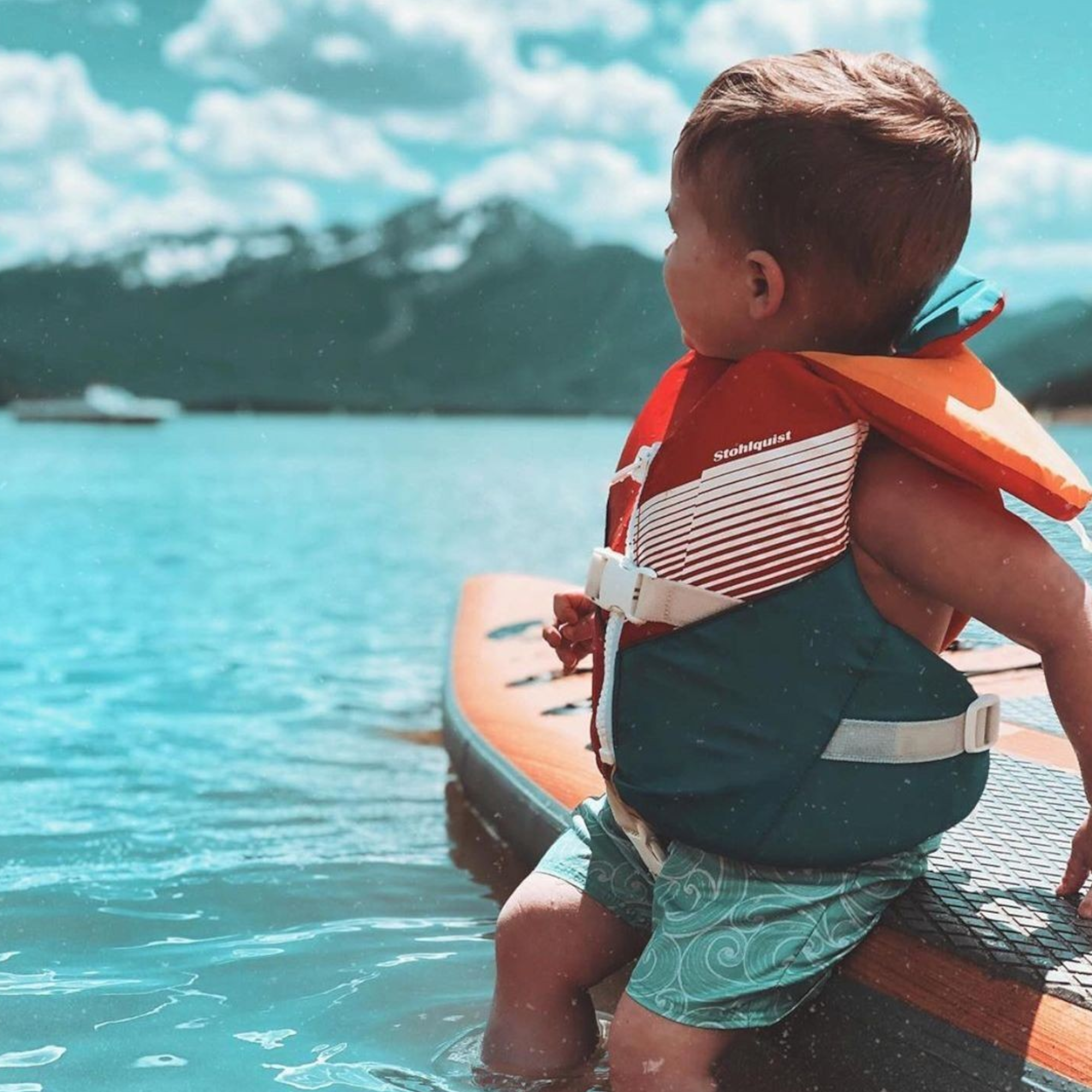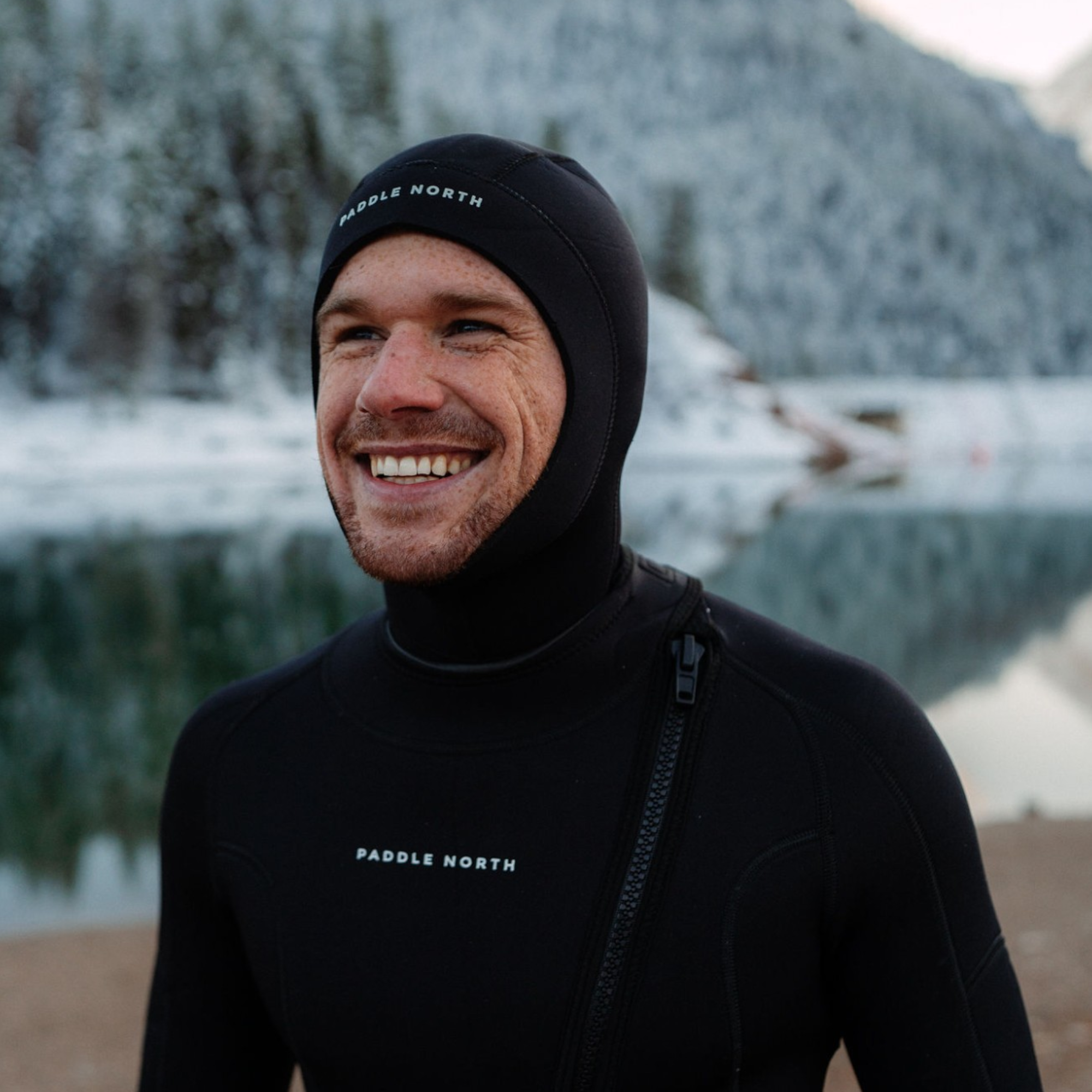Paddle boarding is a versatile water sport that’s fun for just about anyone. As the sport has grown in popularity and gotten more people active and on the water, it’s very important to prioritize safety. Here are five key points to keep in mind when paddling:
-
Wear a PFD: Always wear a personal flotation device (PFD). At the very least, the law requires that a PFD is on the paddle board or kayak with you at all times. With that being said, we strongly recommend wearing a PFD when paddling. This is especially important in open water, cold, or rough conditions. A PFD helps you stay afloat in case of an accidental fall or capsizing and is a legitimate life saver. Any coast guard approved life jacket that is appropriate for your weight range will be adequate. For paddle boarding, it’s worth considering a belt pack PFD, as this won’t interfere with your paddle stroke while remaining attached to your body at all times. You can find one here. If you’re not a strong swimmer, or intend to paddle in rougher water conditions, then we recommend a vest style PFD.

-
Wear an ankle leash: Wearing an ankle leash is very important to ensure your board doesn’t float away and leave you stranded in the water. This is especially essential in open water and in rough or cold water conditions. On fast-moving rivers, ankle leashes should be approached differently. We recommend attaching it to your waist (and, of course, wearing a life jacket), as there is potential for the cord to be entrapped. A quick release belt is recommended. With moving water, it can be much more challenging to reach an ankle leash attached to your ankle.

-
Weather and Water Conditions: Be sure to check the weather and water conditions before heading out. If there are strong winds, choppy waves, incoming storms, etc., it may be best to wait for more favorable conditions.

-
Understand your ability level: Don’t push yourself when just getting started. If you’re a beginner, be sure to start with calm, flat water. Avoid navigating through rapids, rivers with strong currents, or rough open water. As you gain experience, you can gradually increase the difficulty of the conditions you paddle in.
-
Use proper technique: It is essential for SUP safety and enjoyment to learn proper paddling technique. Read our guide here.

-
Know your limits: Paddle boarding can be physically demanding, especially in rough water or when paddling for extended periods of time. Make sure you are properly hydrated (bring a water bottle) and apply sunscreen if necessary (you can store everything in a dry bag). Be sure to take breaks as needed to avoid exhaustion. If you start to feel fatigued or dizzy, it’s important to rest




Leave a comment
All comments are moderated before being published.
This site is protected by hCaptcha and the hCaptcha Privacy Policy and Terms of Service apply.